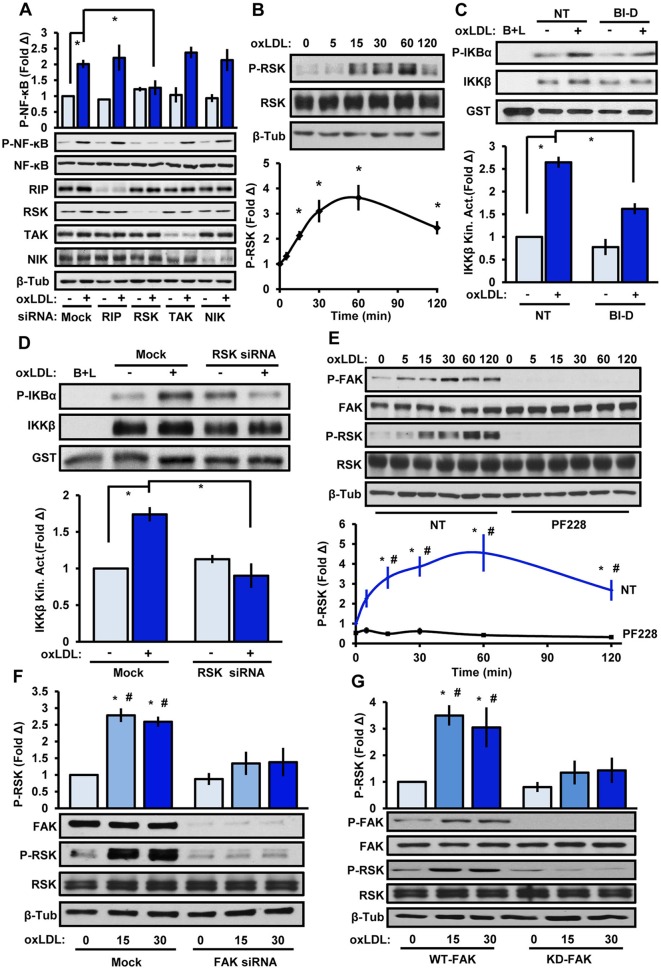Fig. 2.
RSK couples FAK signaling to IKKβ activation. (A) Endothelial cells transfected with siRNA targeting RIP, both RSK1 and RSK2, TAK or NIK were treated with oxLDL and NF-κB phosphorylation (P-NF-κB) was determined by immunoblotting (n=4). (B) Endothelial cells were treated with oxLDL for the indicated times and RSK phosphorylation (P-RSK) was determined by immunoblotting (n=5). (C,D) OxLDL-induced IKKβ kinase activity was determined. (C) Cells were pretreated with BI-D1870 (BI-D, 5 μM, 1 h) or (D) transfected with RSK1 and RSK2 siRNA. Results are mean±s.e.m. (n=4). (E,F) FAK signaling in HAE cells was inhibited with (E) PF-573228 (4 μM, 1 h) or (F) FAK siRNA, and oxLDL-induced (100 μg/ml; indicated timepoints) phosphorylation of FAK and RSK was determined by immunoblotting (n=4–5). (G) Primary lung endothelial cells isolated from FAK-WT or FAK-KD transgenic mice were treated with oxLDL for 15 or 30 min, and FAK and RSK phosphorylation was assessed by immunoblotting (n=5). Results are mean±s.e.m. *P<0.05 (compared to 0 time or no treatment) or #P<0.05 (compared to respective timepoint) using either (B) one-way ANOVA or (A,C–G) two-way ANOVA with Bonferroni post-hoc test. NT, no treatment. Mock indicates mock transfection.

